
Ride along on the search for forgotten automotive gems in the Motor City.
Detroit has been America’s Motor City for decades. It’s home to Ford, General Motors, and Chrysler, as well as numerous auto industry companies and specialty and speed shops. At the same time, it’s the poster child for urban blight and dysfunction. It’s truly a city of contrasts, which presented challenges and opportunities in equal measure to barn finder Tom Cotter.
In Motor City Barn Finds, Cotter plies his trade in a locale rich with automotive history. Detroit’s lost cars are abandoned in empty lots, resident in decrepit buildings, squirreled away in garages, and stashed in historic wrecking yards.
Behind the wheel of his classic 1939 Ford Woodie, Cotter trolls the back streets and neighborhoods of this historic city looking for lost automotive gems accompanied by photographer Michael Alan Ross.
As America’s Motor City, Detroit is an emotional and historical mecca for car enthusiasts, capable of drawing hundreds of thousands of car people for events like Woodward Dream Cruise and attracting design-forward companies like Shinola. At the same time, it’s intimidating to navigate, with numerous dodgy neighborhoods and risky abandoned factory sites. Add it all together and you have fascinating and intriguing opportunities to dig for barn-find gold.

A fully illustrated history of the Land Rover 101 One-Tonne – the forward-control military vehicle developed as a gun tractor for the British Army, in production from 1975-1978. Including specification guides, production histories and original photography, Land Rover Military One-Tonne is an essential guide to these small yet powerful 4 x 4 vehicles
Design and prototypes – from 6-cylinder to V8 and the abandoned powered-axle trailers
The 101 in British military service between 1975 and 1998, including home and overseas deployments
The 101 variants – ambulances, Rapier tractors, hard-bodied versions for electronic warfare and special field conversions
Sales to overseas military authorities
Advice on buying and owning a 101 today
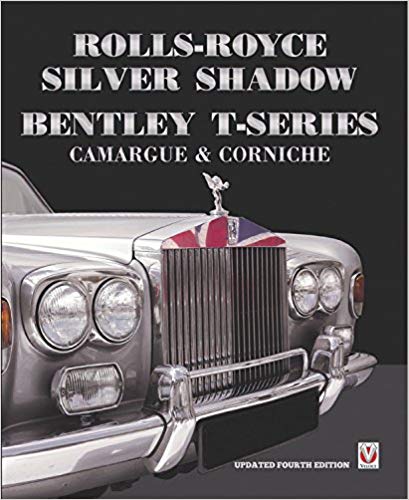
4th Edition
The Rolls-Royce Silver Shadow & Bentley T-Series were a revolutionary step forward when launched in 1965. This book tells the full story of these luxury automobiles, and gives the details of the models, their history, and the design of these classic British cars.
This extensively written and extravagantly photographed volume includes info on coach-built cars, the Silver Wraith ll, Corniche & Camargue. Malcolm Bobbitt also uses his extensive motoring experience to provide valuable advice for buyers, owners, and restorers.
This new Fourth Edition has been fully revised, and contains much new and updated information as well as several new pictures.
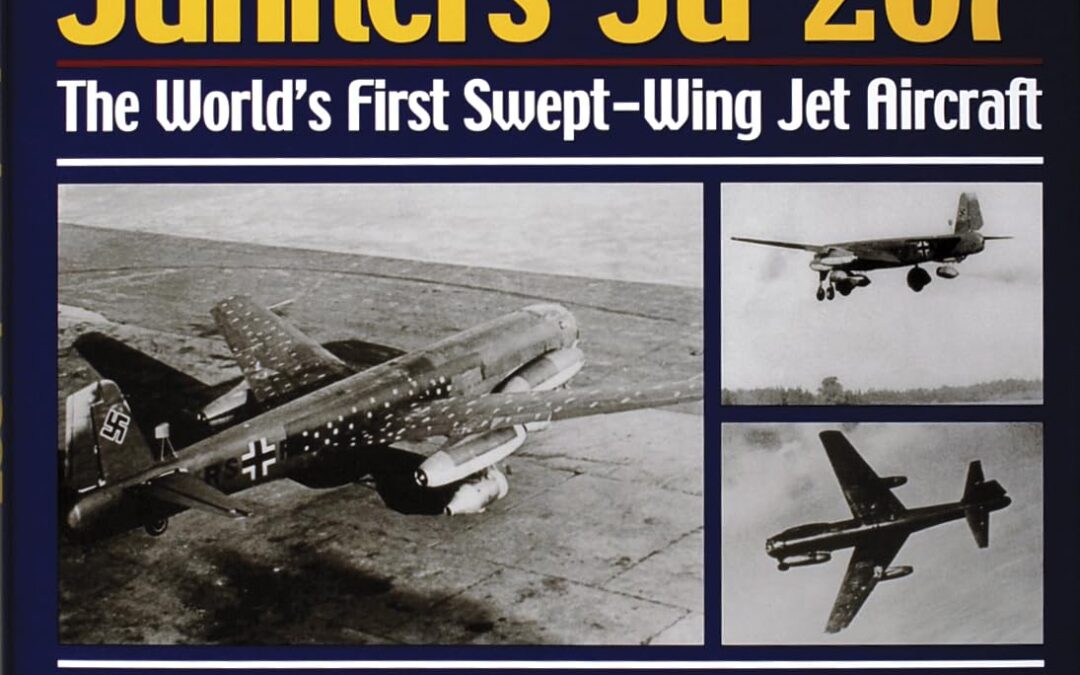
In the summer of 1944, as the Second World War drew to a close, an unusual airplane took to the skies over Leipzig-Brandis on its maiden flight. It was the prototype version of the Ju 287 V1, a four-engine jet bomber. With its forward swept wings, the design was a critical milestone in the annals of aviation technology and made the Ju 287 the first swept-wing design in the world. One of the world’s most interesting airplanes is revealed through many previously unpublished reports, photographs and drawings. It is an airplane whose revolutionary design played a major role in the postwar development of jet aircraft, in both the East and the West. This book fills a gap in the material covering the first chapter of the jet era.

The Vietnam War showed that the need still existed for dedicated strike aircraft performing World War II-style close air support missions. Hence, in 1968, the Sukhoi Design Bureau started work on an aircraft initially known as the SPB (the acronym stood for “battlefield support aircraft”) and then as the T-8. First flown in February 1975, the aircraft incorporated much of the philosophy which had gone into the famous Ilyushin Il-2 attack aircraft, including a forward fuselage made of welded armor to offer maximum protection for the pilot. Designated Su-25 in service, the aircraft entered the fray of the Afghan War immediately after entering service with the Soviet Air Force and quickly earned a reputation as a mean fighting machine. The survivability measures incorporated by the Sukhoi OKB more than paid off, the aircraft often coming home with tremendous damage inflicted by Stinger missiles. The type has also seen action in other parts of the world, including Angola and Bosnia. This book contains approximately 200 black-and-white and color photos illustrating the Su-25’s development and service, detailing the various versions and operator nations. Photos are provided with detailed captions.

General Motors has been a world leader in automotive design for 100 years. No other large scale automobile manufacturer has put such energy and resources into creating cars that are as beautiful, colorful, and forward thinking. Coachbuilt Press is honored to tell this important story through the words of the world’s great automotive historians, journalists, and designers: Phil Patton, Terry V. Boyce, Michael Lamm, Jerry Burton, Tracy Powell, Tony Hossain, Lawrence R. Gustin, Jeffrey I. Godshall, Ed Welburn, Ken Gross, and Richard S. Adatto. Unique historical images and artwork are complimented by the insightful, contemporary photographs of Michael Furman. Foreword by Bob Lutz; introduction by Nicola Bulgari; edited by Jonathan A. Stein.
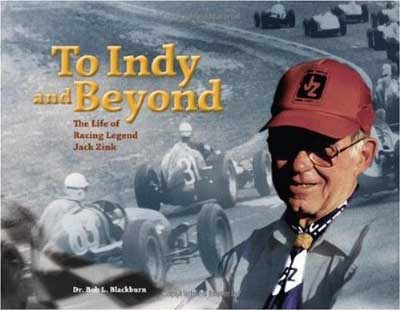
Jack Zink is a legend in the world of car racing. As a driver for more than twenty years, he won stockcar races on dirt tracks, accumulated trophies in off-road dune buggies, and even set a flying mile speed record in a 1957 Pontiac he designed and built for the early NASCAR circuit. As a team leader, mechanic, and engineer, he pushed the limits of technology with his innovative designs for cars that were lighter, lower, and more powerful. Even his failures, such as the attempted use of a turbine engine in a car, opened new doors that others rushed through in the pursuit of speed and durability. Perhaps he is best remembered for his victories at the greatest track in the world, the Indianapolis Motor Speedway, and the greatest race in the world, the Indianapolis 500. From 1950 to 1967, Jack walked shoulder to shoulder with the greatest team owners, mechanics, and drivers in racing history. Twice, his team won the coveted Borg Warner Trophy, in back-to-back Indy victories (1955 and 1956). But Jack was much more than a pioneer in car racing. He raced sailboats. He raced motorcycles. He also was a skilled engineer and businessman, ultimately building not one but two companies into international giants that still dominate the combustion industry with burners, flares, and incinerators that greatly reduce pollution. Even with all these accomplishments, Jack was most proud of his service to his community, especially the Zink Ranch, a 33,000-acre nature preserve in the Osage Hills of Oklahoma that will perpetually provide open space in an increasingly crowded and urban world. This biography weaves all of these stories into a portrait of Jack Zink. Along the way are the friends and family members who were part of the adventure, as well as the challenges and opportunities that drove him forward. Here is the story of one amazing man who lived by a simple code: “The man who wins is the man who tries.”
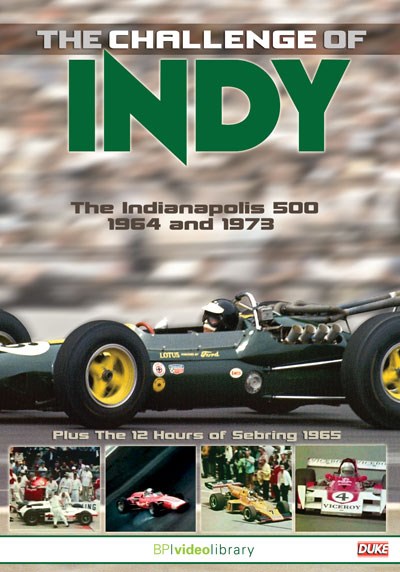
Race fans – Start your Engines and get ready to experience The Challenge of Indy!
The Indianapolis 500 is one of the greatest motorsport events, providing a unique challenge for driver, machine and team on the high-speed banked oval at the world-famous Brickyard. This DVD features two action-packed archive films charting races which are etched into the memories of US motorsport fans – although for very different reasons.
We open with the 1964 Indy 500, following practice, qualifying and the race as the established American stars battle to hold off a European invasion led by Formula One star Jim Clark and his Ford-powered, Colin Chapman-designed Lotus. The rear-engined Lotus was on the verge of revolutionising American motorsport forever, with Clark nudging the track record up towards 160mph. This would be the final year of domination for the front-engined machines of US greats like A.J. Foyt and Parnelli Jones, and what a last year! The thrilling action footage captures the slides, crashes, spins and wheel-to-wheel dicing as Foyt laps the entire field in his Sheraton Thompson Special. It was a moment of motorsport history, but as this classic film shows, it was also a full-throttle race.
Fast forward almost a decade for our second film, Going to Extremes. This is the story of the bizarre 1973 Indianapolis 500, which took three days to run and even then didn’t go the full distance. Once again we are treated to practice and the gripping drama of making the cut in qualifying before turning our attention to race day. Among the stars lining up are legends like Foyt, Mario Andretti, Al Unser and Bobby Unser – and with the first 200mph lap in sight, there is the prospect of a great Indy 500. However, what should have been a great race turned into three frustrating days of waiting before the fans were able to enjoy a single green flag lap. When the racing did get under way, it was breathtaking, and out superb archive footage brings you all the action.
There’s also a chance to enjoy another classic American motorsport event, the 12 Hours of Sebring. The film 12 Hour Grind takes us back to the rain-hit 1965 running of this classic sports car race, which sees Dan Gurney, Graham Hill, Paddy Hopkirk, Ritchie Ginther and many more stars doing battle in a variety of roaring racing machines, including Ford GT40s, AC Cobras and stunning Chaparrals.
“If you can’t wait for May’s Indy 500, relive the event’s glory days with this DVD. It covers great races from 1964 and 1973 from the infamous Brickyard, with footage of Brits like Jim Clark, Graham Hill and Paddy Hopkirk, but strangely the rain-hit 1965 Sebring 12 Hours race is a bonus feature” Auto Express
“This DVD captures the best footage from two of the greatest races ever held at the famed Brickyard, plus bonus footage from the 1965 12 hours of Sebring. the 1964 Indy 500 was the last year a front-engined car won the race, and the bizarre 1973 Indy 500 took three days to run and didn’t even go the full distance. Watch the full story, from practice to the chequered flag, of these spectacular events” Autocar
“With colour films of practice for the ’64 and ’73 500 miles, and bonus material covering the run-up to the ’65 Sebring 12 Hours, there’s plenty to enjoy here. We loved the footage of Pole Day at the Brickyard in ’64, where ‘James Clark Jr’ took the fight to the roadsters. Great to see Smokey Yunick’s Hurst Floor Shift Special, too”

For some people, driving is an art; for others, it’s a science. At the Isaac Newton School of Driving, though, every car is a laboratory on wheels and every drive an exciting journey into the world of physics. As explained by renowned science writer and physics professor Barry Parker―whose father was a car mechanic and garage owner―almost every aspect of driving involves physics. A car’s performance and handling relies on fundamental concepts such as force, momentum, and energy. Its ignition system depends on the principles of electricity and magnetism. Braking relies on friction―yet another basic scientific concept―and if the brakes fail, the resulting damage, too, can be predicted using physics.
Parker’s first lesson describes the basic physics of driving: speed and acceleration; why you get thrown forward while braking or outward while turning; and why car advertisements boast about horsepower and torque. He goes on to discuss the thermodynamics of engines, and how they can be more fuel efficient; and what friction and traction are and how they keep a car’s tires on the road, whether it’s dry, wet, or icy. He also describes how simple laws of physics enable scientists to design aerodynamic cars and high-tech steering systems. Parker then explores the high-performance physics of auto racing, outlines how traffic accidents are reconstructed by police, uses chaos theory to explain why traffic jams happen, and describes what cars of the future might look like. Whether you drive a Pacer or a Porsche, The Isaac Newton School of Driving offers better―and better-informed―driving through physics.
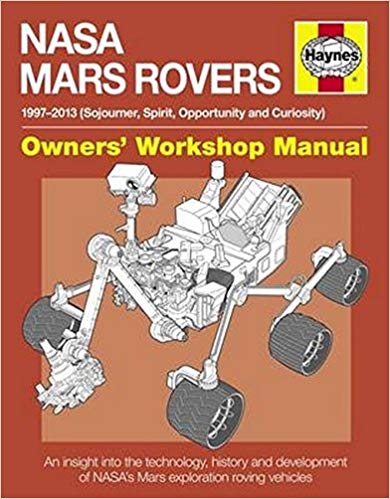
Is there life on Mars? This age-old question has prompted many missions to Mars, with the most recent rover, Curiosity, having safely landed in August 2012 amid a blaze of publicity. This manual covers the development, design and engineering of three generations of Mars rover: Sojourner, which landed in 1997, was the size of a microwave; Spirit and Opportunity, both the size of a shopping cart, followed in 2004; and Curiosity is the size of a car, with a design life of two years. Learn how these machines work as well as what they have found and hope to discover – and look forward to the possibility that humans may yet set foot on the Red Planet.












